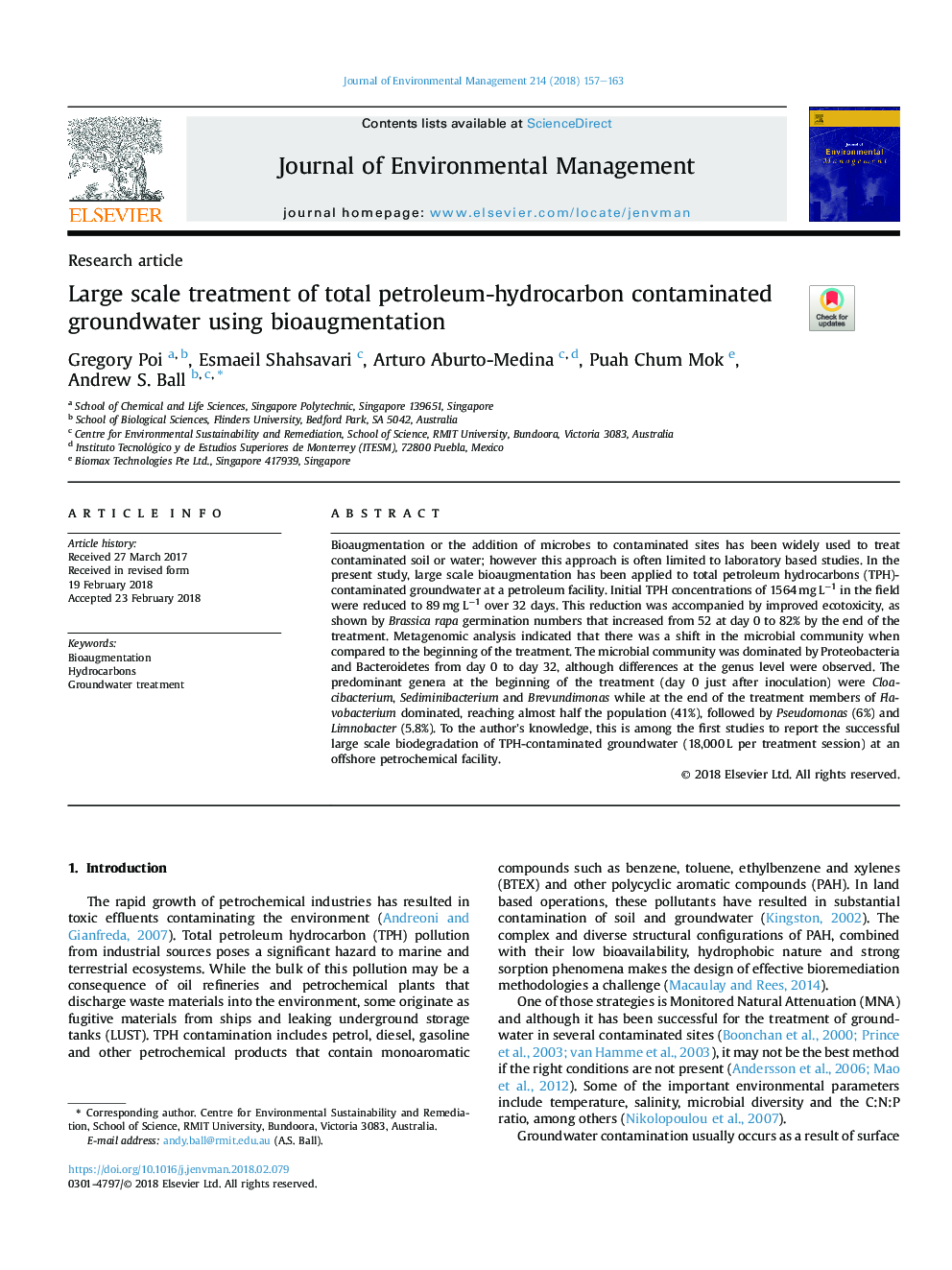| Article ID | Journal | Published Year | Pages | File Type |
|---|---|---|---|---|
| 7477558 | Journal of Environmental Management | 2018 | 7 Pages |
Abstract
Bioaugmentation or the addition of microbes to contaminated sites has been widely used to treat contaminated soil or water; however this approach is often limited to laboratory based studies. In the present study, large scale bioaugmentation has been applied to total petroleum hydrocarbons (TPH)-contaminated groundwater at a petroleum facility. Initial TPH concentrations of 1564â¯mgâ¯Lâ1 in the field were reduced to 89â¯mgâ¯Lâ1 over 32 days. This reduction was accompanied by improved ecotoxicity, as shown by Brassica rapa germination numbers that increased from 52 at day 0 to 82% by the end of the treatment. Metagenomic analysis indicated that there was a shift in the microbial community when compared to the beginning of the treatment. The microbial community was dominated by Proteobacteria and Bacteroidetes from day 0 to day 32, although differences at the genus level were observed. The predominant genera at the beginning of the treatment (day 0 just after inoculation) were Cloacibacterium, Sediminibacterium and Brevundimonas while at the end of the treatment members of Flavobacterium dominated, reaching almost half the population (41%), followed by Pseudomonas (6%) and Limnobacter (5.8%). To the author's knowledge, this is among the first studies to report the successful large scale biodegradation of TPH-contaminated groundwater (18,000â¯L per treatment session) at an offshore petrochemical facility.
Related Topics
Physical Sciences and Engineering
Energy
Renewable Energy, Sustainability and the Environment
Authors
Gregory Poi, Esmaeil Shahsavari, Arturo Aburto-Medina, Puah Chum Mok, Andrew S. Ball,
